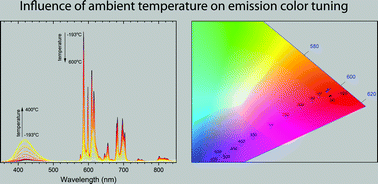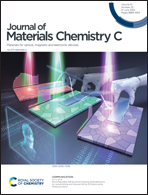Anomalous luminescence properties and cytotoxicity assessment of Sr3(PO4)2 co-doped with Eu2+/3+ ions for luminescence temperature sensing†
Abstract
Strontium phosphate (Sr3(PO4)2) powders co-doped with Eu2+ and Eu3+ optically active ions were obtained by a modified Pechini's method and heat-treated at 900°, 1000° and 1100 °C in the air atmosphere. Structural and morphological properties of the obtained materials were investigated by X-ray powder diffraction (XRD), Rietveld refinement method, scanning electron microscopy (SEM) technique, and infrared spectroscopy (FT-IR). Emission excitation, emission, and temperature dependent emission spectra, and luminescence decay time under 394.5 and 318 nm wavelength excitation were recorded and studied in detail. Moreover, the decay times of the blue component were measured depending on the ambient temperature. Furthermore, the 5D0 → 7F2 transition is the most intense transition. Additionally, the emission of Eu2+ ions was detected. The mechanism of Eu3+ ion reduction related to the heat treatment procedure was proposed and described in the Kröger–Vink notation. Cytotoxicity assay was performed on the osteoblast cell line using a murine model to evaluate the cytocompatibility of the obtained materials. Additionally, the hemocompatibility properties were evaluated using the hemoglobin release assay and the normal morphology of the erythrocyte membrane was visualized by confocal microscopy after 24 hours of incubation with the obtained materials.



 Please wait while we load your content...
Please wait while we load your content...